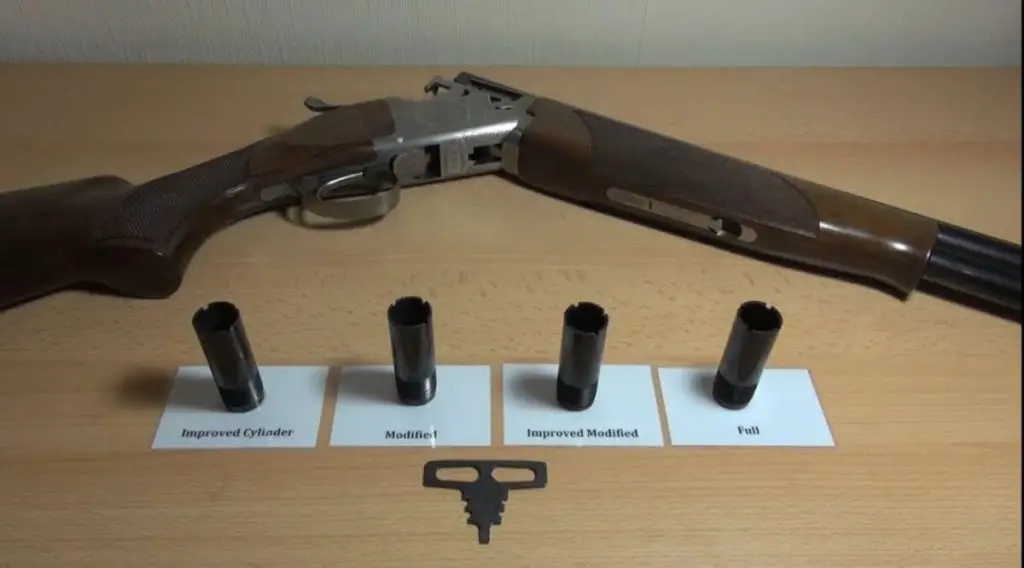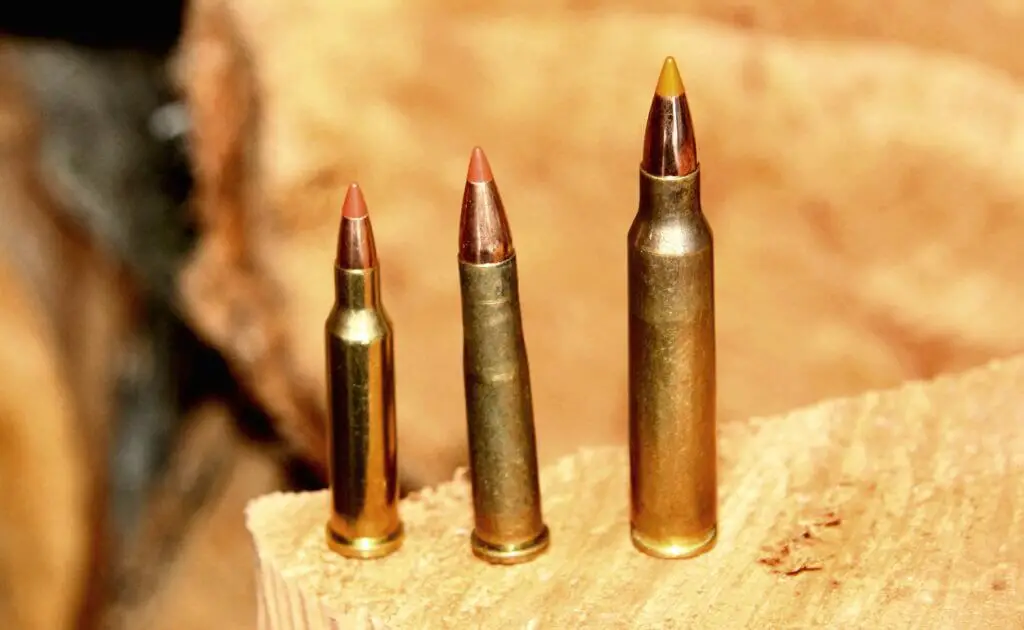When it comes to AR-15 style rifles, the SIG M400 TREAD and Springfield Saint are two remarkable options that have captivated firearm enthusiasts. As someone who has spent considerable time with both models, I’ve come to appreciate their unique attributes and the range of experiences they offer. Whether you’re a seasoned shooter or a newcomer looking to expand your understanding, this comparison aims to cover everything you need to make an informed decision. Let’s dive into the intricacies of these firearms and explore their distinctions.
| Feature | SIG M400 TREAD | Springfield Saint |
|---|---|---|
| Manufacturer | SIG Sauer | Springfield Armory |
| Caliber | 5.56 NATO / .223 Rem | 5.56 NATO / .223 Rem |
| Barrel Length | 16 inches | 16 inches |
| Weight | 7 lbs | 6.9 lbs |
| Stock | Adjustable | Bravo Company stock |
| Handguard | Free-floating M-LOK | M-LOK compatible |
| Trigger | Single-stage polished/hard-coat | Nickel Boron Coated GI trigger |
| Muzzle Device | Three-prong flash hider | A2 flash hider |
| Price Range | $900 – $1,100 | $800 – $1,000 |
Unpacking the Features and Performance
Understanding a rifle’s design and ergonomics is vital. Both the SIG M400 TREAD and Springfield Saint uphold their manufacturer’s reputation for quality, but they do so in distinct ways.
Build and Quality
**SIG M400 TREAD**: Crafted with precision, the SIG M400 TREAD boasts a robust build that immediately communicates durability. Its aircraft-grade aluminum receiver ensures longevity, while the attention to machining details provides a professional touch. Using the TREAD has been a testament to SIG Sauer’s commitment to delivering a superior shooting experience.
Pros:
– Exceptional build quality
– Free-floating M-LOK handguard provides superb modularity
– Attractive and ergonomic design
Cons:
– Slightly heavier than some competitors
– Price might be a barrier for entry-level users
**Springfield Saint**: The Springfield Saint stands out with its integration of high-grade materials that deliver both reliability and resilience. The Accu-Tite tension system minimizes receiver movement, enhancing stability and accuracy. My experience with the Saint was notably smooth, with its meticulous construction demonstrating Springfield Armory’s prowess in manufacturing.
Pros:
– Lightweight without sacrificing strength
– Excellent control with the Bravo Company furniture
– Comprehensive, tight build
Cons:
– Trigger may feel basic compared to aftermarket options
– Slightly less modular out-of-the-box
Customization Potential
One of the joys of AR-15 rifles is the ease of customization, allowing shooters to tailor their rifles according to personal preferences and mission requirements.
**SIG M400 TREAD**: The TREAD comes pre-equipped with a free-floating M-LOK handguard, offering ample space for attachments like optics, lights, and grips. This facility caters well to users who value tactical flexibility and custom setups.
**Springfield Saint**: While the Saint might not offer the same degree of modularity out-of-the-box as the TREAD, it compensates with solid base components. The M-LOK compatible handguard still allows for significant customization, although it might require further investment for those wanting extensive upgrades.
Real World Experience and Usability
A firearm’s performance in real-world scenarios trumps its specifications on paper. Here’s how each rifle fares in practical terms, based on my personal experience.
Range Performance
**SIG M400 TREAD**: Shooting with the TREAD was smooth and consistent, thanks to its polished trigger and balanced weight distribution. The rifle excelled in maintaining accuracy over prolonged periods, which made it a favorite for longer range sessions.
**Springfield Saint**: The Saint offers a lively performance with instinctive handling. Its lightweight build aids quick target acquisition, making it ideal for both novices and experienced shooters. Its straightforward break-down process impressed me during maintenance and cleaning sessions.
Challenges and Considerations
**SIG M400 TREAD**: Despite its high-end construction, the weight of the TREAD could be challenging for prolonged carry scenarios. Additionally, while the rifle comes with advanced features, beginners might find its price point slightly steep when compared to base models.
**Springfield Saint**: One of the challenges I faced with the Saint was its trigger, which could benefit from an upgrade for those seeking a more refined shooting experience. However, the existing trigger is still suitable for most typical shooting scenarios.
Overall Impression
Both the SIG M400 TREAD and Springfield Saint have successfully carved their niches in the competitive AR-15 market. Their differences cater to distinct preferences and use cases, yet they share a common trait—their ability to deliver a reliable, enjoyable shooting experience. As with any significant purchase, understanding these nuances is key to aligning a chosen rifle with your specific needs and aspirations.
Frequently Asked Questions
1. What are the key differences between the SIG M400 Tread and Springfield Saint?
The SIG M400 Tread and Springfield Saint are both popular AR-style rifles, but they have some key differences. The Tread has a free-floating M-LOK handguard, while the Saint has a traditional handguard with a forward hand stop. The Tread also comes with a 16-inch barrel, while the Saint has a 16-inch barrel with a 1:8 twist rate. Additionally, the Tread has a flat-faced trigger, while the Saint has a standard trigger.
2. Which rifle has better accuracy, the SIG M400 Tread or Springfield Saint?
Both the SIG M400 Tread and Springfield Saint are known for their accuracy, but the Tread has a slight edge due to its free-floating handguard, which can help reduce barrel harmonics and improve accuracy. However, both rifles are capable of shooting sub-MOA groups with the right ammunition and shooter skill.
3. Are there any differences in the quality of materials used between the SIG M400 Tread and Springfield Saint?
Both the SIG M400 Tread and Springfield Saint are made with high-quality materials, including aluminum receivers and steel components. However, some users have noted that the Tread has a slightly higher build quality and finish compared to the Saint, but both rifles are known for their durability and reliability.
4. Which rifle has better aftermarket support, the SIG M400 Tread or Springfield Saint?
Both the SIG M400 Tread and Springfield Saint have a wide range of aftermarket accessories and upgrades available, including handguards, stocks, triggers, and optics. However, the Tread may have a slight edge in aftermarket support due to its popularity among gun owners and the availability of Tread-specific accessories from SIG Sauer.
5. Is the SIG M400 Tread or Springfield Saint better for customization?
Both the SIG M400 Tread and Springfield Saint are highly customizable rifles, but the Tread may be slightly more versatile due to its free-floating handguard and compatibility with a wide range of aftermarket parts. However, the Saint is also a popular choice for customization, with many users opting to upgrade the handguard, trigger, and other components.
6. Which rifle has better value for money, the SIG M400 Tread or Springfield Saint?
Both the SIG M400 Tread and Springfield Saint offer excellent value for money, with quality construction, reliable performance, and a range of features typically found in higher-end AR-style rifles. The choice between the two ultimately comes down to personal preference and intended use, as both rifles are well-regarded in the firearms community.
7. Are there any known reliability issues with either the SIG M400 Tread or Springfield Saint?
Both the SIG M400 Tread and Springfield Saint are known for their reliability, with users reporting few if any issues with feed failures, jams, or other malfunctions. Both rifles are built to high standards and have been tested in various environments and conditions to ensure their durability and performance.
8. Can the SIG M400 Tread and Springfield Saint be used for hunting or home defense?
Both the SIG M400 Tread and Springfield Saint can be used for hunting and home defense, as they are chambered in popular calibers like 5.56mm NATO and .223 Remington. The rifles are accurate, reliable, and easy to handle, making them suitable for a variety of shooting applications.
9. Which rifle has better ergonomics, the SIG M400 Tread or Springfield Saint?
Both the SIG M400 Tread and Springfield Saint are ergonomically designed rifles, with comfortable grips, intuitive controls, and adjustable features like stocks and handguards. Some users may prefer the ergonomics of one rifle over the other based on personal preference, so it is recommended to handle both rifles before making a decision.
10. What is the typical price difference between the SIG M400 Tread and Springfield Saint?
The SIG M400 Tread and Springfield Saint are priced competitively compared to other AR-style rifles in their class. The Tread typically retails for around $900-$1000, while the Saint is priced slightly lower at around $800-$900. Prices may vary based on availability, promotions, and additional accessories included with each rifle.
- How to Put a Scope on a Mosin Infantry in Tarkov: A Quick Guide - November 7, 2024
- How to Edit a Scope Box in Revit: A Step-by-Step Guide - November 6, 2024
- How to Put a Scope on Mosin Tarkov: Expert Tips for Gamers - November 6, 2024


